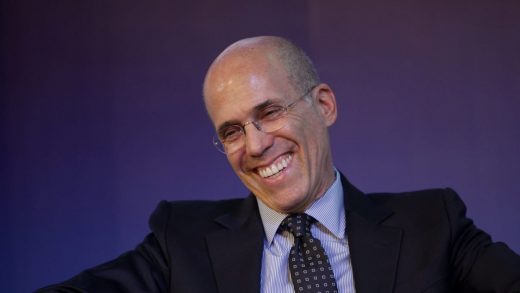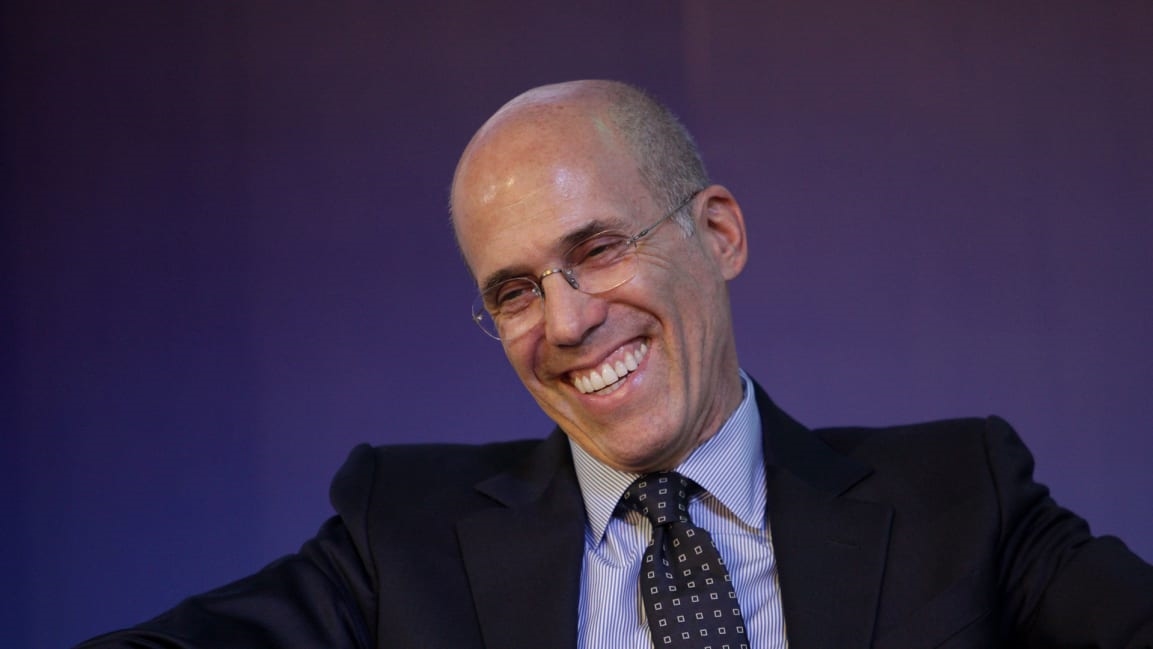Jeffrey Katzenberg’s mobile video service Quibi adds more stars to its roster
On Wednesday, Jeffrey Katzenberg announced more news about his upcoming mobile video service, Quibi. In addition to landing projects with Guillermo del Toro and producer Jason Blum (The Purge, Halloween), Quibi has inked deals with Stephen Curry’s Unanimous Media as well as director Catherine Hardwicke, both of whom will create shows that will stream on Quibi in 10-minute increments.
Hardwicke’s series is called How They Made Her and is a thriller about an AI character. Curry’s will be a documentary about a the St. Benedict’s Preparatory high school basketball team in Newark, New Jersey, Katzenberg said at Variety‘s Innovate summit in Los Angeles. The series will be developed and produced by Whistle. Katzenberg was onstage with Quibi CEO Meg Whitman, the former chief executive of HP.
Quibi has been making headlines due to the star power of its top execs—Katzenberg was a founding father of DreamWorks and DreamWorks Animation—as well as the money it has lined up and is paying out to creators. The company has a $1 billion war chest and is paying up to $6 million an hour for some of its shows, Katzenberg said on Wednesday. According to a person who has met with Quibi, the company’s strategy is to start with premium content from A-list creators and then eventually lower the bar to create the amount of content Katzenberg is promising: up to 5,000 bytes of content in the year following its launch in either late 2019 or early 2020. In meetings, Quibi executives show a pyramid graph to illustrate the model. Their main message, this person says, is: Come back to us with a big star attached to your project.
The plus for creators is that Quibi is offering long-term ownership of their IP—something that competitors like YouTube Red do not offer. Quibi will only have a seven-year exclusive hold on content, after which the rights will revert to the creators.
The idea behind Quibi, which is short for “quick bites” of video, is to be the Netflix of short-form content, and to create high-quality videos that people consume during the in-between moments of their day: standing in line at the supermarket, clearing your head during a lunch break, etc. Yet other attempts to follow this path—YouTube’s original channel initiatives with celebrities and stars, and, more recently, Instagram’s IGTV—have hit hurdles, in part because of ingrained behavior. Most people prefer to scroll through Twitter or Instagram during those in-between moments. When they sit down to watch something, it’s more likely to be a show on Netflix or an episode of Last Night Tonight with John Oliver on HBO Now.
As one digital executive put it: “People are willing to bet on Jeffrey, but when you talk to people behind closed doors, there’s a healthy skepticism as to whether there’s a white space here for a reason.”
Yet one agent counters this, saying, “I think Katzenberg is right on this front. Only so many people are willing to sit down for an hour and watch an episode of TV—especially younger generations. They’re way more inclined to watch a 10-minute episode of something. It’s all about short bursts. They’re bouncing around between umpteen things. This is a mobile generation.”
Katzenberg himself has playfully admitted a healthy dose of self-deprecating skepticism about the project. “Doing this falls somewhere between improbable and impossible,” he said in October. Referring to himself and Whitman, he said, “We’ve been to the rodeo a whole bunch of times. That play, between improbable and impossible, that’s my home address.”
Fast Company , Read Full Story
(26)



